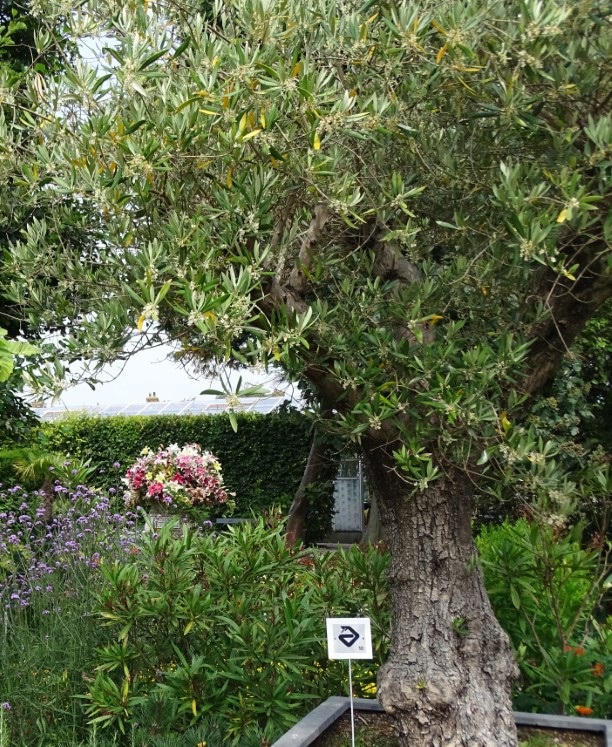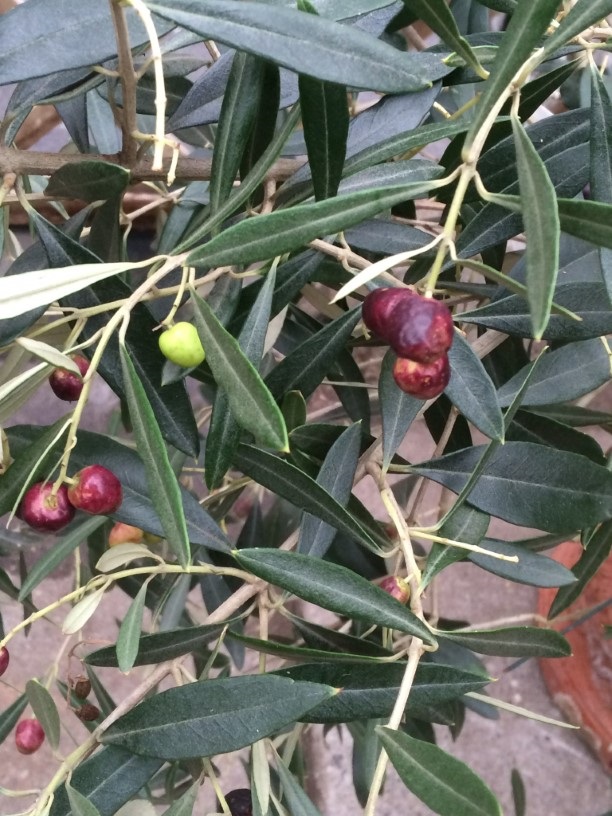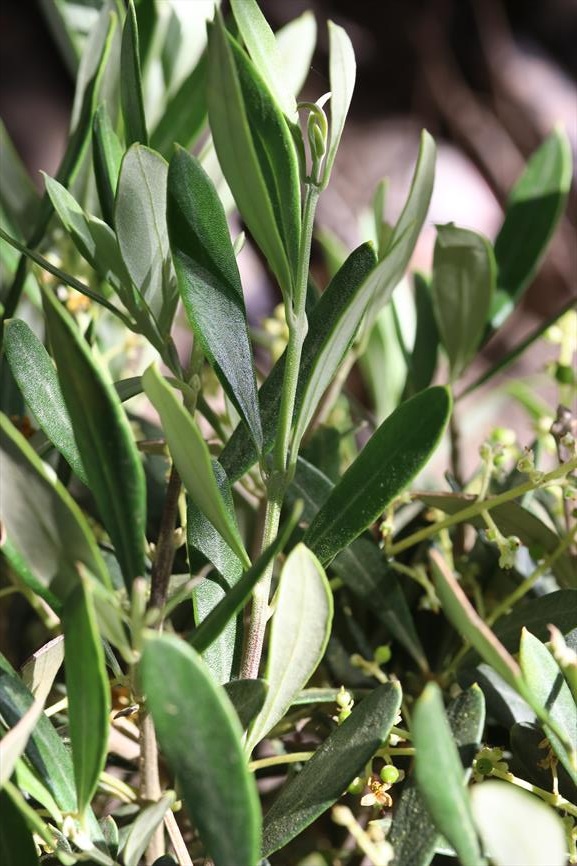Common Olive
Olea europaea subsp. europaea
Olive family (Oleaceae)
The stories related to this plant are still being edited.
Themes
The fruit is usually pickled or cured with water, brine, oil, salt or lye. They can also be dried in the sun and eaten without curing when they are called 'fachouilles'. There are various grades of the oil, the finest (known as 'Extra Virgin') is produced by cold pressing the seeds without using heat or chemical solvents. The seed of unpalatable varieties is normally used and this oil has the lowest percentage of acidity and therefore the best flavour. Other grades of the oil come from seeds that are heated (which enables more oil to be expressed but has a deleterious effect on the quality) or from using chemical solvents on seed that has already been pressed for higher grades of oil.
Fragrant flowers.
Olive oil is mono-unsaturated and regular consumption is thought to reduce the risk of circulatory diseases. The plant is used in Bach flower remedies - the keywords for prescribing it are 'Complete exhaustion' and 'Mental fatigue'. The leaves are antiseptic, astringent, febrifuge and sedative. A decoction is used in treating obstinate fevers, they also have a tranquillising effect on nervous tension and hypertension. Experimentally, they have been shown to decrease blood sugar levels by 17 - 23%. Externally, they are applied to abrasions. The bark is astringent, bitter and febrifuge. It is said to be a substitute for quinine in the treatment of malaria. In warm countries the bark exudes a gum-like substance that has been used as healing wounds.
The non-drying oil obtained from the seed is also used for soap making, lighting and as a lubricant. The oil is a good hair tonic and dandruff treatment. Plants are used to stabilize dry dusty hillsides. The wood is very hard, heavy, beautifully grained, takes a fine polish and is slightly fragrant. It is used in turnery and cabinet making, being much valued by woodworkers.
Maroon and purple dyes are obtained from the whole fresh ripe fruits. Blue and black dyes are obtained from the skins of fresh ripe fruits. A yellow green dye is obtained from the leaves.
According to the biblical story, a dove was released by Noah after the flood in order to find land; it came back carrying a freshly plucked olive leaf, a sign of life after the Flood and of God’s bringing Noah, his family and the animals to land.
An olive branch is a traditional symbol of peace.
Details
| Description: | Tree, to 10 m. |
|---|---|
| Distributions: | South europe - mediterranean. |
| Habitat: | Woods and scrub in dry rocky places. |
| Year cycle: | Perennial (polycarpic decidous) |
| Hardiness: | 14 - 23 f (hardy - average winter) |
| Flowering period: | Mei - juni |
| Flower color: | White |
| Notes on flowers: | Small flowers in panicles, whitish. |
| Fruiting period: | Augustus - oktober |
| Fruit color: | Green, black |
| Notes on fruits: | Fruit ripens from green to black. |
| At its best: | Mei, oktober |



